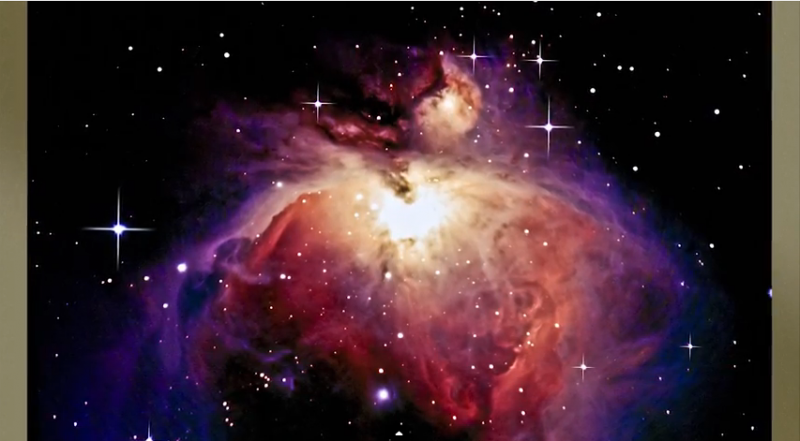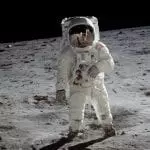[Orginally published as the first part of List of Star Formation Problems]
Standard Models Start Late
The models for star formation begin, amazingly, with the explosion of preexisting stars (e.g. Wikipedia states, “When these forces fall out of balance, such as due to a supernova shock wave, the cloud begins to collapse”) or, as with the classic study by Larson which assumed a starting point where the hypothetical condensation was already well underway.
Analytical calculations and computer simulators do not show that star formation is possible based upon the known laws of physics.
Star Rotation
The “angular momentum problem” as researcher Richard B Larson calls it (2003, The physics of star formation), recognizes that the rotation rates of the potential star-forming nebulae are a thousand times greater than could possibly be contained in a star without it flying apart.
As a spinning nebula condensed, its spin would be conserved, like a figure skater pulling in her arms, so that the rotation rate of a star would be wildly fast beyond anything known in the universe.
Condensing Nebula
Condensing a gas cloud like the Eagle Nebula would increase pressure and temperature, which would then expand the cloud because the weak force of gravity is easily overpowered by the cloud’s pressure, as well as its angular momentum. Further, the cloud would have to be more massive than an average star yet orders of magnitude smaller than any known nebulae.
Magnetic Strength
The journal Science published what amounts to a parallel of the angular momentum problem,
Interstellar clouds are permeated by magnetic fields that we believe to be effectively frozen to the contracting gas; as the gas cloud collapses to form a star, the magnetic field lines should be compressed ever closer together, giving rise to enormous magnetic fields, long before the collapse is completed. These fields would resist further collapse, preventing the formation of the expected star; yet we observe no evidence of strong fields, and the stars [allegedly] do form, apparently unaware of our theoretical difficulties.
Dark Matter to the Rescue (Again)
If gravity working on matter were sufficient to explain star formation, scientists would not be pinning their hope on dark matter. As explained in 2007 by a Reuters science correspondent Dark matter key to formation of first stars,
As the universe initially was only helium and hydrogen, dark matter was critical in providing the gravitational force to pull these elements together to form stars. Now that there are other objects in the galaxy [including pre-existing exploding stars], dark matter is not needed to form stars.
Then again in 2014 a Nature paper on the formation of the first stars and galaxies was described by Caltech’s Richard Ellis, “Now we can get to grips with how stars and galaxies form and relate it to dark matter. You can make stars and galaxies that look like the real thing. But it is the dark matter that is calling the shots.” As a theory rescue device, dark matter is rather flexible!
Population III
The Big Bang predicts that the “first generation” of stars, referred to as Population III stars, would have been comprised only of hydrogen and helium (without metals, i.e., heavy elements) and that they should still be plentiful. Yet even though many millions of stars have been studied and cataloged, not even one Population III star has been found. “Astronomers have never seen a pure Population III star, despite years of combing our Milky Way galaxy.” –Science Jan. 4, 2002, p. 66 (see this reference and many more).
Recently this problem was defined away by claiming that the smallest Pop III stars would have been a thousand times more massive than previously claimed and so would more rapidly expend their nuclear fuel. But then in Nov. 2018, an allegedly 13.5 Gyr-old very small binary star system was discovered rewinding the wildly morphing stellar evolution hypothesis.
No Dust to Form Molecular Hydrogen
If the so-called first generation stars could overcome all other star formation hurdles and have their formation helped by the use of molecular hydrogen, an additional problem (not unlike the difficulty of forming raindrops without a pollution/particulate nucleus) exists in that hydrogen atoms are unlikely to bond without a landing surface of sorts.
Blue Star Assembly Line
Short-lived (1M to 10M-yr) Blue “straggler” stars unexpectedly found in allegedly much-older clusters.
Millions of Years of Missing Stage 3 Supernovas
An explosion appeared in the night sky in 1054 A.D. as a supernova remnant (SNR) forming the Crab Nebula. Big Bang theory predicts a significant rate of star explosions (one every 25 to 100 years). Yet, not only are there millions of years of missing SNRs of Stage 3 diameter, further, the number of Stage 1 and Stage 2 SNRs correspond well to the expected number if the universe is less than 10,000 years old. (For more on this, check out this RSR program.)
Conclusion
The lack of awareness of these problems, even among science buffs in the general public, is evidence of the bias in popular science media sources, as in the example below from Astronomy Cast, hosted by Fraser Cain, the founder of Universe Today. The physics haven’t changed since a Cambridge professor summed up the stellar evolution problem:
The process by which an interstellar cloud is concentrated until it is held together gravitationally to become a protostar is not known. In quantitative work, it has simply been assumed that the number of atoms per cm3 has somehow increased about a thousand-fold over that in a dense nebula. The two principal factors inhibiting the formation of a protostar are that the gas has a tendency to disperse before the density becomes high enough for self-gravitation to be effective, and that any initial angular momentum would cause excessively rapid rotation as the material contracts. Some mechanism must therefore be provided for gathering the material into a sufficiently small volume that self-gravitation may become effective, and the angular momentum must in some way be removed. Eva Novotny, Introduction to Stellar Atmospheres and Interiors, Oxford University Press.
And here’s the admission from Neil deGrasse Tyson in his Death by Black Hole: And Other Cosmic Quandaries, p. 187:
Not all gas clouds in the Milky Way [or any galaxy] can form stars at all times. More often than not, the cloud is confused about what to do next. Actually, [we] astrophysicists are the confused ones here. We know the cloud wants to collapse under its own weight to make one or more stars. But rotation as well as turbulent motion within the cloud work against that fate. So, too, does the ordinary gas pressure you learned about in high-school chemistry class. Galactic magnetic fields also fight collapse: they penetrate the cloud and latch onto any free-roaming charged particles contained therein, restricting the ways in which the cloud will respond to its self-gravity. The scary part is that if none of us knew in advance that stars exist, front line research would offer plenty of convincing reasons for why stars could never form.
Years ago NASA scientist John C. Brand in The Physics and Astronomy of the Sun and Stars provided the circular reasoning for believing that the laws of physics can do what otherwise appears impossible:
Contemporary opinion on star formation holds that objects called protostars are formed as condensations from the interstellar gas. This condensation process is very difficult theoretically, and no essential theoretical understanding can be claimed; in fact, some theoretical evidence argues strongly against the possibility of star formation. However, we know that the stars exist, and we must do our best to account for them.







